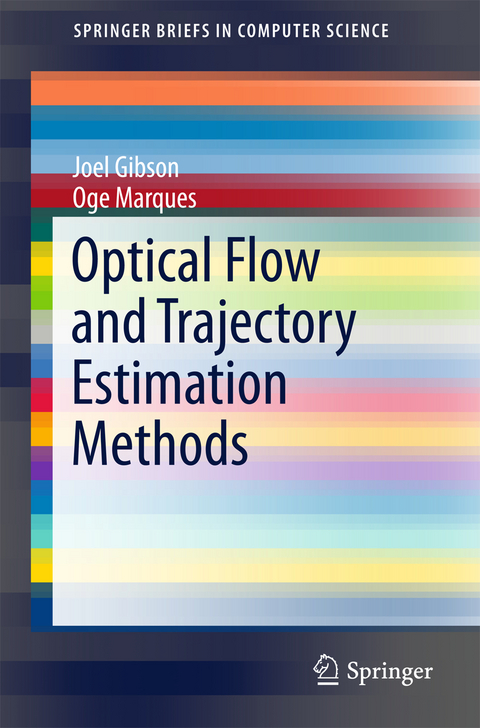
Optical Flow and Trajectory Estimation Methods
Seiten
2016
|
1st ed. 2016
Springer International Publishing (Verlag)
978-3-319-44940-1 (ISBN)
Springer International Publishing (Verlag)
978-3-319-44940-1 (ISBN)
This brief focuses on two main problems in the domain of optical flow and trajectory estimation: (i) The problem of finding convex optimization methods to apply sparsity to optical flow; and (ii) The problem of how to extend sparsity to improve trajectories in a computationally tractable way.
Beginning with a review of optical flow fundamentals, it discusses the commonly used flow estimation strategies and the advantages or shortcomings of each. The brief also introduces the concepts associated with sparsity including dictionaries and low rank matrices. Next, it provides context for optical flow and trajectory methods including algorithms, data sets, and performance measurement. The second half of the brief covers sparse regularization of total variation optical flow and robust low rank trajectories. The authors describe a new approach that uses partially-overlapping patches to accelerate the calculation and is implemented in a coarse-to-fine strategy. Experimental results show that combining total variation and a sparse constraint from a learned dictionary is more effective than employing total variation alone.
The brief is targeted at researchers and practitioners in the fields of engineering and computer science. It caters particularly to new researchers looking for cutting edge topics in optical flow as well as veterans of optical flow wishing to learn of the latest advances in multi-frame methods.
Beginning with a review of optical flow fundamentals, it discusses the commonly used flow estimation strategies and the advantages or shortcomings of each. The brief also introduces the concepts associated with sparsity including dictionaries and low rank matrices. Next, it provides context for optical flow and trajectory methods including algorithms, data sets, and performance measurement. The second half of the brief covers sparse regularization of total variation optical flow and robust low rank trajectories. The authors describe a new approach that uses partially-overlapping patches to accelerate the calculation and is implemented in a coarse-to-fine strategy. Experimental results show that combining total variation and a sparse constraint from a learned dictionary is more effective than employing total variation alone.
The brief is targeted at researchers and practitioners in the fields of engineering and computer science. It caters particularly to new researchers looking for cutting edge topics in optical flow as well as veterans of optical flow wishing to learn of the latest advances in multi-frame methods.
Optical Flow Fundamentals.- Optical Flow and Trajectory Methods in Context.- Sparse Regularization of TV-L Optical Flow.- Robust Low Rank Trajectories.
| Erscheinungsdatum | 08.10.2016 |
|---|---|
| Reihe/Serie | SpringerBriefs in Computer Science |
| Zusatzinfo | X, 49 p. 6 illus. |
| Verlagsort | Cham |
| Sprache | englisch |
| Maße | 155 x 235 mm |
| Themenwelt | Informatik ► Grafik / Design ► Digitale Bildverarbeitung |
| Informatik ► Theorie / Studium ► Künstliche Intelligenz / Robotik | |
| Schlagworte | Computer Imaging, Vision, Pattern Recognition and • Computer Science • computer vision • Dictionary Learning • optical flow • Regularization • sparsity • Trajectory estimation • Video Processing |
| ISBN-10 | 3-319-44940-0 / 3319449400 |
| ISBN-13 | 978-3-319-44940-1 / 9783319449401 |
| Zustand | Neuware |
| Haben Sie eine Frage zum Produkt? |
Mehr entdecken
aus dem Bereich
aus dem Bereich
Modelle für 3D-Druck und CNC entwerfen
Buch | Softcover (2022)
dpunkt (Verlag)
34,90 €
alles zum Drucken, Scannen, Modellieren
Buch | Softcover (2024)
Markt + Technik Verlag
24,95 €


